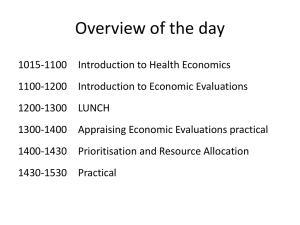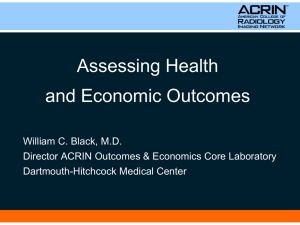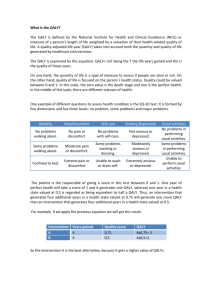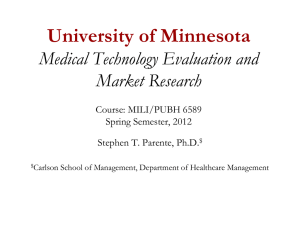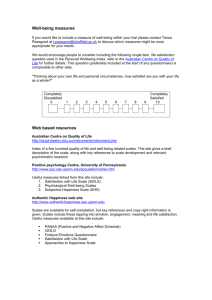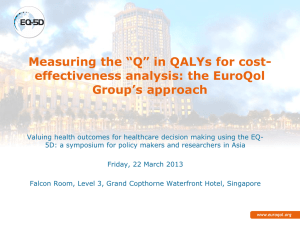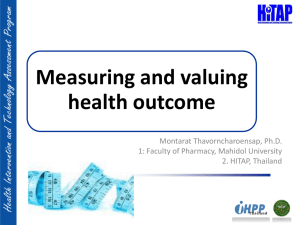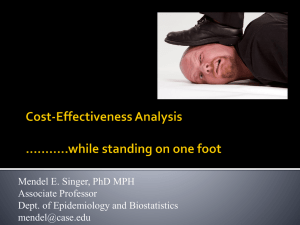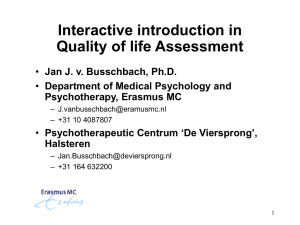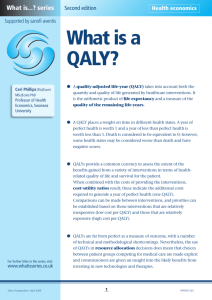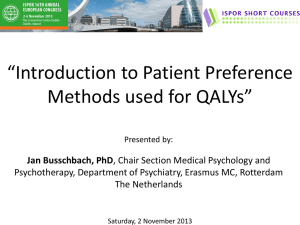The future of QALYs
advertisement
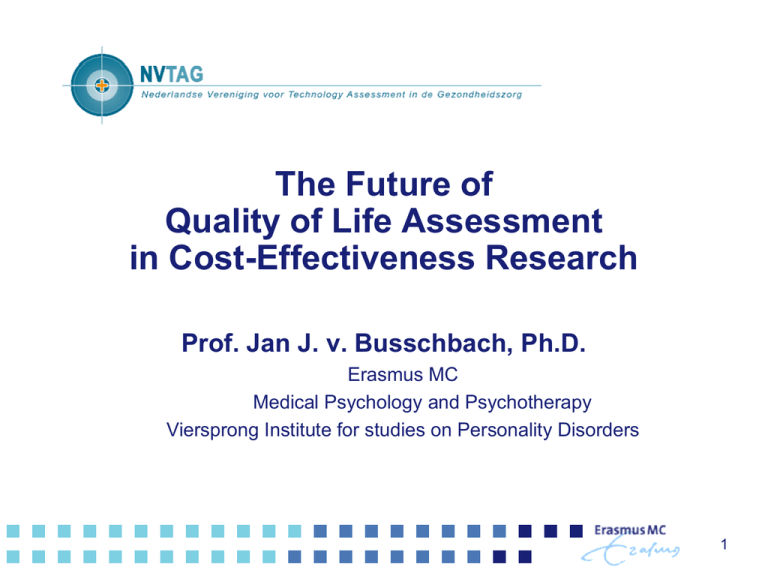
The Future of Quality of Life Assessment in Cost-Effectiveness Research Prof. Jan J. v. Busschbach, Ph.D. Erasmus MC Medical Psychology and Psychotherapy Viersprong Institute for studies on Personality Disorders 1 QoL in HTA: QALY In the past, much criticism Cohen CB. Quality of life and the analogy with the Nazis. Journal of Medicine and Philosophy 8: 113-35, 1983. Criticism remains ….the strictly fascist essence of those QALYs (so-called Quality-Adjusted Life Years)… 4 But QALY rules… Publications 1980[pdat] AND (QALY or QALYs) 1000 900 800 700 600 500 400 300 200 100 0 1975 1980 1985 1990 1995 2000 2005 2010 From 1980 till 2010: 7049 publications in PubMed 2015 There is not yet an alternative… Raad voor de Volksgezondheid en Zorg Weight QALYs by severity of illness QALYs determine “severity” 7 Value based pricing Health Secretary Andrew Lansley Measures "will help ensure better access for patients to effective drugs and innovative treatments on the NHS" Like RvZ Again adding severity Adding Innovation QALY still at the hart of the judgment Severity and innovation both expressed terms of QALYs 8 Efficiency frontier Germany IQWiG Still discussion whether it is possible ‘in theory’ to make such value judgments, let alone in practice 9 Which measure? Questionnaires EQ-5D HUI SF-6D Direct measures TTO Discrete choice SG VAS Questionnaires EQ-5D Dominates health economics Said to be insensitive New 5 level version is on its way SF-6D Overtook HUI in popularity Little support development HUI Little recent development Expensive Disease specific instruments As validation methodology becomes cheaper… Why not validate a disease specific instrument? The big research question Are values valid? Are the values the same as with HUI, SF-6D etc Narrow scope Values are too high Attention bias Differences are too big Bold-on instruments Combine generic instruments with disease specific dimensions “Bold-on” the disease specific dimension Can solve the narrow scope Absolute value level might be valid Could avoid attention bias Does it also avoid the attention bias? Direct measures Used to value health states in models TTO Discrete SG VAS WTP choice dominates coming up slips aside not in favor in health economics never more than a promise The big questions TTO Values below dead Discrete choice Is discrete choice valid within the QALY approach? How to anchor in death – normal health scale • TTO? Care QALY in care is disputed QALY might not be sensitive Same issues as in cure? But QALY is ok for big issues in care No care = dead Care might be involve other aspects than health For instance: does not measure autonomy Disease specific instrument Involve need and innovation Discrete choice in care New instrument for care ICECAP ASCOTT Several other initiatives What is the relation with QALY? Why go for another scale? 17 Conclusion: Standardization Questionnaires Could merge to EQ-5D But disease specific instruments might blur Direct valuation TTO seems to prevail, but not yet one methodology Care Just the start of development 18 Future questionnaires Cheap EQ-5D Sensitive SF-6D Simple to use EQ-5D Many translations SF-6D Many value sets EQ-5D Will EQ-5D-5L dominate? SF-6D HUI SF-6D EQ-5D HUI There must be room for more instruments… HUI EQ-5D (3L) HUI HUI SF-6D
